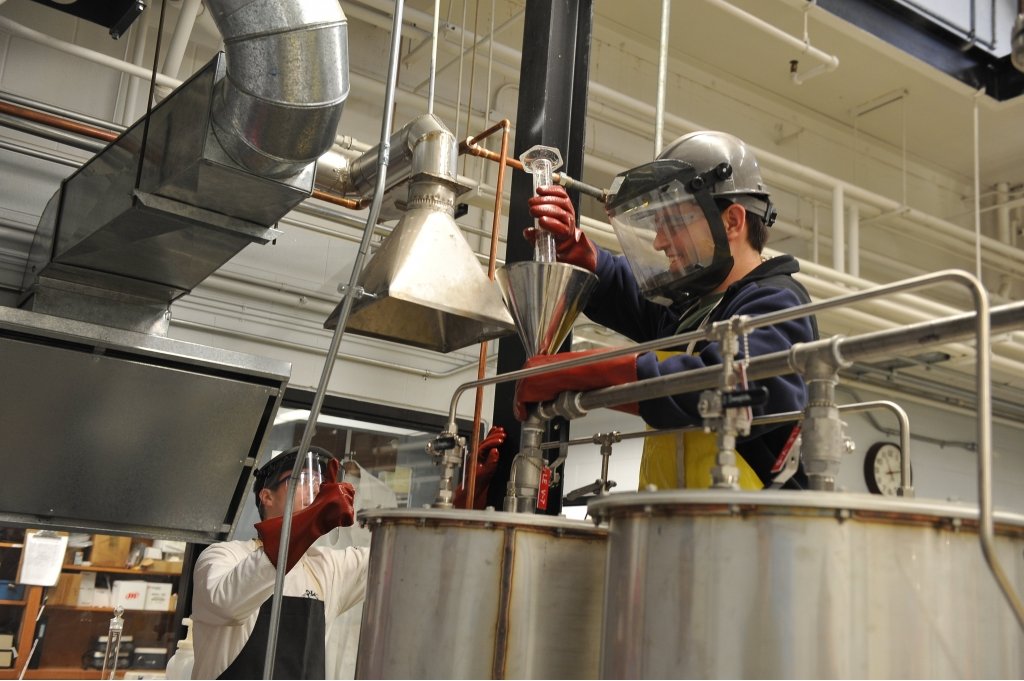The Art of Separation: Unveiling the Magic of Separation Processes in Chemical Engineering
 Anand Rode
Anand Rode
The world of chemical engineering revolves around transforming raw materials into valuable products. But before these transformations can occur, a crucial step often needs to take place: separation. Imagine trying to bake a cake without separating the egg whites from the yolks! Separation processes play a similar role, isolating desired components from mixtures in a way that's both efficient and precise.
In this blog, we'll embark on a journey to explore some of the most common separation processes employed by chemical engineers:
1. Distillation: From Booze to Biofuels, a Timeless Technique:
Distillation, perhaps the most well-known separation process, utilizes the difference in boiling points of components in a mixture. By heating the mixture and condensing the vapor, we can isolate the lower-boiling-point component. This age-old technique has numerous applications, from creating your favorite spirit to purifying water for drinking and industrial use. Distillation also plays a vital role in the production of biofuels, separating ethanol from fermented plant matter.
2)Drying : Removing moisture mastering material
In the realm of chemical engineering, transforming raw materials into valuable products often involves manipulating their moisture content. This is where the drying unit operation steps in. Drying removes moisture (usually water) from a solid, semi-solid, or liquid material, transforming it into a drier, more stable, and often more usable form. From the coffee granules in your morning cup to the life-saving powders in medications, drying plays a crucial role in countless industrial processes.
The Essence of Drying: Mass Transfer Magic
At its core, drying is a mass transfer process. It involves the movement of water molecules from the interior of the material to the surrounding environment, where they are evaporated and carried away. This transfer of moisture typically requires two key elements:
Heat Source: Energy is needed to break the bonds holding water molecules to the material. This heat can be provided through conduction (direct contact with a hot surface), convection (exposure to hot air), or radiation (absorption of electromagnetic waves).
Mass Removal: Once water evaporates from the material's surface, it needs to be removed to prevent it from accumulating and slowing down the drying process. Common methods include using ventilation or applying a vacuum to draw away the moist air.
3. Filtration: Straining Out the Unwanted:
Imagine separating coffee grounds from your morning brew. Filtration works similarly, using a physical barrier (filter) to allow the desired liquid to pass through while retaining solid particles. This versatile technique finds applications in everything from wastewater treatment to clarifying juices and syrups.
4. Extraction: Selective Separation with a Solvent's Help:
Sometimes, a simple physical barrier isn't enough. Extraction utilizes a solvent, a liquid that selectively dissolves one component of a mixture from the others. This dissolved component can then be recovered from the solvent, achieving a clean separation. Extraction has diverse applications, from decaffeinating coffee to isolating valuable essential oils from plants.
4. Crystallization: Growing the Perfect Crystals:
Think of the sugar crystals in your coffee or the dazzling facets of a gemstone. Crystallization involves creating a saturated solution, where the solvent can no longer hold the solute (dissolved material) in solution. Crystals then begin to form, allowing us to separate the desired solid component from the liquid. This process plays a crucial role in purifying chemicals, pharmaceuticals, and even producing high-purity salts.
5. Chromatography: A Microscopic Separation Powerhouse:
Imagine a microscopic race where different components in a mixture travel at varying speeds through a packed column. That's the essence of chromatography! A mobile phase (liquid or gas) carries the mixture through a stationary phase (solid packing), separating components based on their interactions with each phase. This powerful technique has numerous applications, from analyzing complex mixtures in research labs to purifying proteins for medical use.
Beyond the Basics: Advanced Separation Techniques
The world of separations doesn't stop there. Chemical engineers have developed a range of advanced techniques for specialized applications:
Membrane Separation: Membranes with selective permeability allow specific components to pass through while rejecting others. This technique finds use in everything from desalination (removing salt from seawater) to gas purification.
Adsorption: Certain solid materials have a natural affinity for specific molecules. Adsorption utilizes this phenomenon to capture desired components from a mixture or gas stream.
These are just a few examples of the diverse separation processes employed in chemical engineering. By understanding these techniques, we gain a deeper appreciation for the complex world behind the products we use every day. The next time you sip on purified water, savor a delicious cup of coffee, or admire a sparkling gemstone, remember the ingenuity of separation processes quietly
Subscribe to my newsletter
Read articles from Anand Rode directly inside your inbox. Subscribe to the newsletter, and don't miss out.
Written by
